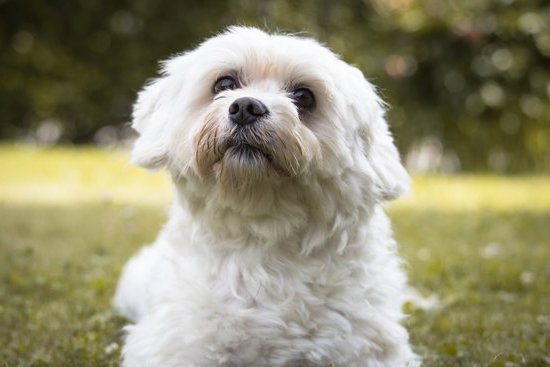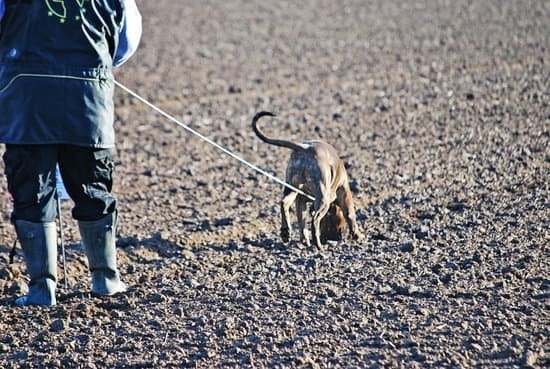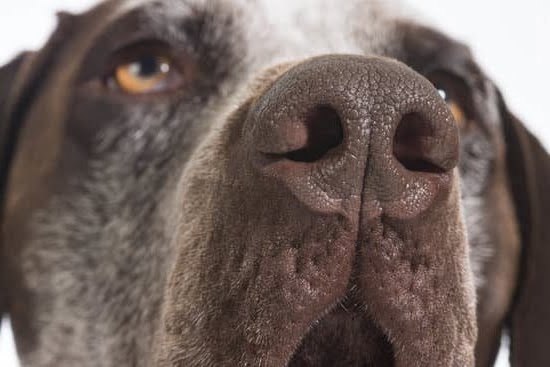Training a dog to use a grass pad can be a convenient and cleanliness solution for pet owners. Rather than relying on regular outdoor walks or struggling with pee pads indoors, a grass pad provides an alternative that simulates the feel of outdoor grass. In this article, we will explore the benefits of using a grass pad for dog training and how it can make your life easier as a pet owner.
Using a grass pad offers several advantages over other methods of training. First and foremost, it provides dogs with a familiar surface that mimics the feeling of natural grass. This can be particularly helpful for puppies or small dogs living in apartments or homes without access to a yard. Additionally, unlike traditional pee pads, grass pads are more eco-friendly as they do not contribute to landfill waste.
Another benefit of using a grass pad is the convenience factor. By having an indoor potty area for your dog, you eliminate the need for frequent walks outside, especially in inclement weather or during late-night bathroom breaks. Furthermore, cleaning up after your dog becomes easier when using a grass pad, as urine is absorbed by the underlying tray while solids can be easily removed and disposed of.
In the following sections, we will delve deeper into understanding the purpose of a grass pad and how to choose the right one for your needs. We will then guide you through the process of preparing and introducing your dog to the grass pad, establishing a training routine, troubleshooting common challenges, and maintaining its cleanliness.
Ultimately, by successfully training your dog to use a grass pad, you will be able to enjoy the convenience and cleanliness it offers while ensuring their comfort and well-being.
Understanding the Purpose of a Grass Pad
A grass pad is a valuable tool in dog training, especially for those who have limited access to outdoor grass. This section will explain the concept behind a grass pad and highlight its significance in certain living situations. By simulating outdoor grass for dogs, a grass pad provides an ideal environment for them to relieve themselves and learn proper potty habits.
The purpose of a grass pad is to create an artificial outdoor space that closely resembles real grass. It is designed with synthetic or real grass blades that provide a natural feel and texture for dogs. This simulation helps dogs associate the designated area with appropriate potty behavior. While it may not be as expansive as a backyard lawn, a grass pad offers convenience and cleanliness for both dogs and their owners.
Certain living situations make it difficult for dogs to have regular access to outdoor areas covered in natural grass. This can include apartment living, high-rise buildings, or extreme weather conditions. In these cases, a grass pad becomes essential in providing an accessible and suitable space for dogs to relieve themselves. Additionally, older dogs or those with mobility issues may benefit from having a reliable spot indoors where they can comfortably eliminate waste.
To further understand the purpose of a grass pad, it is important to consider its benefits:
- Convenience: A grass pad eliminates the need for constant walks outside or long trips down multiple floors in apartment buildings.
- Cleanliness: Unlike traditional pee pads or newspapers, a grass pad absorbs liquid waste while also minimizing odors due to its specialized drainage system.
- Health and hygiene: Dogs are less exposed to bacteria found on concrete or other surfaces that may lead to infections or diseases when using a clean and sanitized grass pad.
By understanding the purpose of a grass pad, dog owners can make informed decisions about incorporating this useful tool into their training routine.
| Benefits of Using a Grass Pad |
|---|
| Convenience |
| Cleanliness |
| Health and hygiene |
Choosing the Right Grass Pad
When it comes to training your dog to use a grass pad, choosing the right one is crucial. There are several different types of grass pads available, each with its own features and advantages. By selecting the most suitable grass pad for your dog, you can ensure a successful training experience.
There are a few key factors to consider when selecting a grass pad. First, you’ll want to consider the size of the pad. It’s important to choose a pad that is appropriately sized for your dog’s breed and size. If the pad is too small, your dog may have difficulty using it properly. On the other hand, if it’s too large, your dog may not fully utilize the designated area.
Durability is another important factor to consider. Dogs can be rough on their training equipment, so you’ll want to choose a grass pad that can withstand regular use without wearing out or deteriorating quickly. Look for materials that are sturdy and resistant to damage from chewing or scratching.
Maintenance is also an essential consideration when choosing a grass pad. Some pads are easier to clean and maintain than others. Look for pads that allow for easy removal of waste and have features such as drainage holes or urine-absorbing layers that help keep the surface dry and odor-free.
| Type | Size | Durability | Maintenance |
|---|---|---|---|
| Plastic Grass Pads | Various sizes available | Durable | Easy to clean; may require occasional replacement |
| Natural Grass Pads | Various sizes available | Moderate durability | Requires regular replacement; may require more maintenance |
| Artificial Grass Pads | Various sizes available | Highly durable | Easy to clean; minimal maintenance required |
By considering these factors and comparing different grass pad options, you can choose the right one that meets your dog’s needs and ensures a successful training experience. Remember to take into account your dog’s size, the durability of the pad, and the level of maintenance that best suits your lifestyle. With the right grass pad in place, you’ll be well on your way to successfully training your dog to use it.
Preparing the Grass Pad
Before introducing your dog to the grass pad, it’s important to properly prepare the area to ensure a successful training experience. Follow these step-by-step instructions to set up the grass pad effectively:
- Clean the area: Start by thoroughly cleaning the designated area where you’ll place the grass pad. Remove any debris, rocks, or sticks that may hinder your dog’s use of the pad. This will help create a clean and safe environment for training.
- Lay down a protective layer: To protect your flooring or carpet underneath, consider placing a waterproof mat or tarp under the grass pad. This layer will prevent any moisture from seeping through and causing damage.
- Unroll and secure the grass pad: Start by unrolling the grass pad in its designated area, ensuring that it lies flat and covers the entire space without wrinkles or folds. Most grass pads come with built-in anchors or adhesive strips to keep them securely in place.
- Add attractant (optional): If you’re having trouble getting your dog interested in using the grass pad, consider using an attractant spray specifically designed for this purpose. Apply a few sprays on top of the grass to entice your dog and encourage them to use it.
- Place potty bells or indicators (optional): For additional training cues, you can attach potty bells or visual indicators near the grass pad. Teach your dog to ring the bells when they need to go potty or associate certain visuals with using the pad successfully.
Remember that proper placement of the grass pad plays a vital role in its effectiveness. Ideally, position it in an easily accessible location that mimics what your dog would naturally do outside – a spot with some privacy but not too far away from their usual living area.
By following these setup instructions, you’ll be well on your way to providing an optimum environment for training your dog on how to use a grass pad.
Introducing Your Dog to the Grass Pad
Introducing your dog to the grass pad is a crucial step in successfully training them to use it. This section will discuss the importance of gradual introduction, provide tips on how to familiarize your dog with the grass pad, and highlight positive reinforcement techniques.
The Importance of Gradual Introduction
When introducing your dog to the grass pad, it is important to take a gradual approach. Abruptly forcing them onto the pad may result in resistance or fear, making it more difficult for them to understand its purpose. Start by placing the grass pad in a familiar and accessible area where your dog spends most of their time.
Familiarizing Your Dog with the Grass Pad
To familiarize your dog with the grass pad, begin by allowing them to explore it at their own pace. Encourage them to sniff and investigate the surface without any pressure or expectations. Some dogs may naturally be curious and start using it immediately, while others may need more time to adjust.
To further encourage their comfort, you can place some treats or toys near or on the grass pad. This will create positive associations and make them more eager to explore and use it. Additionally, consider placing some “pee pads” on top of the grass initially, especially if your dog is used to using pee pads indoors. This can help bridge the transition from indoor pee pads to the grass pad.
Positive Reinforcement Techniques
Using positive reinforcement techniques is crucial when introducing your dog to the grass pad. Whenever your dog shows interest in or uses the grass pad correctly, reward them with praise, affection, and treats. This positive association will reinforce their understanding that using the grass pad is desirable behavior.
It’s important not to scold or punish your dog if they have accidents outside of the grass pad during this initial stage. Instead, redirect them gently back onto the pad without showing frustration or anger. Consistency and patience are key during the introduction phase to ensure your dog feels comfortable and confident in using the grass pad.
Establishing a Training Routine
Training your dog to use a grass pad effectively requires consistency and patience. By establishing a training routine, you can create a structured environment that will help your dog understand and adapt to using the grass pad. Follow these steps to establish an effective training routine:
- Schedule Regular Bathroom Breaks: Set specific times throughout the day for bathroom breaks. This consistency will help reinforce the idea that they should use the grass pad for elimination purposes.
- Use Verbal Cues: Choose a specific command or cue to signal your dog to use the grass pad. For example, saying “go potty” or “go outside” every time you take them to the designated area will help them associate that phrase with going on the grass pad.
- Supervise and Reward: During the initial stages of training, make sure to supervise your dog while they are using the grass pad. When they eliminate on the pad, immediately praise them and reward them with treats or verbal praise. This positive reinforcement will reinforce their understanding of using the grass pad for elimination.
- Consistent Timing: Pay attention to your dog’s bathroom habits and schedule their visits to the grass pad accordingly. Dogs generally need to go after meals, playtime, or waking up from naps. By anticipating their needs and taking them to the grass pad at these times, you increase their chances of successful toilet training.
- Limit Access: In order to prevent accidents elsewhere in your home, limit your dog’s access to areas where they have previously eliminated inside before they became accustomed to using the grass pad consistently.
Consistency is key when establishing a training routine for your dog’s successful use of a grass pad. By following these steps and dedicating time and effort into proper training, you will help ensure your pet’s success in using the grass pad consistently for elimination purposes.
Troubleshooting Common Challenges
Addressing Accidents Outside the Pad
While training your dog to use a grass pad, accidents outside the designated area may occur. It is important to address these mishaps promptly to prevent any setbacks in your training progress. One common reason for accidents outside the pad is that your dog may not have fully grasped the concept or may still be in the process of learning.
To address this issue, it is crucial to closely monitor your dog’s behavior and body language. Take note of any signs that indicate they need to eliminate, such as pacing, sniffing around, or circling. When you observe these behaviors, quickly redirect your dog towards the grass pad and encourage them to use it as their bathroom spot by using verbal cues or commands like “go potty” or “use your grass pad.”
If they do their business outside the pad, calmly interrupt them without scolding or punishing them. Instead, gently guide them back to the grass pad and offer positive reinforcement when they use it correctly.
Overcoming Resistance or Fear
Some dogs may show resistance or fear towards using a grass pad due to unfamiliarity with its texture or surface. To help your furry friend overcome this challenge, it is essential to create positive associations with the grass pad.
Start by gradually introducing your dog to the grass pad. Allow them to explore it at their own pace and associate it with pleasant experiences such as treats, praise, and playtime. You can place their favorite toys on or near the pad to pique their curiosity and make it more enticing.
If your dog displays fear towards stepping on the grass pad, consider placing a small ramp leading up to it so that they can gradually approach without feeling overwhelmed. Remember to remain patient throughout this process and avoid forcing your dog onto the pad as it could worsen their fear.
Soothing Separation Anxiety
Separation anxiety can also pose a challenge when training your dog to use the grass pad. Dogs with separation anxiety may find it difficult to relieve themselves without their owners present. To help alleviate this anxiety, establish a gentle routine that gradually reduces your presence during bathroom breaks.
Start by accompanying your dog to the grass pad as they eliminate and gradually increase the distance between you over time. For example, begin by staying close to them during elimination, then gradually move a few steps away, and eventually observe from a distance.
By gradually increasing the distance, your dog will learn that it is safe to use the grass pad even when you are not next to them. Offering treats or rewards after each successful session can further reinforce positive behavior.
By troubleshooting these common challenges, you can ensure a smoother training process and effectively teach your dog to use a grass pad for their bathroom needs. Patience, consistency, and positive reinforcement will be instrumental in overcoming these obstacles and successfully establish this convenient and clean habit for your furry companion.
Maintaining and Cleaning the Grass Pad
Once you have successfully trained your dog to use a grass pad, it is important to establish a regular maintenance routine to keep the pad clean and odor-free. Proper maintenance not only ensures the longevity of the grass pad but also promotes your dog’s health and hygiene. Here are some necessary steps for maintaining and cleaning your grass pad.
Firstly, it is crucial to remove solid waste from the grass pad on a daily basis. Use a scooper or plastic bag to pick up any feces and dispose of them properly. This helps prevent odor buildup and keeps the surface clean for your dog’s next use.
In addition to removing solid waste, you should also regularly rinse the grass pad with water. This can be done by using a hose or by filling a bucket with water and pouring it over the surface. Rinsing helps remove any urine residue or dirt that may have accumulated on the grass blades.
To ensure thorough cleaning, it is recommended to periodically disinfect the grass pad. You can do this by using pet-safe disinfectants specifically designed for artificial or natural grass pads. Follow the instructions on the disinfectant product carefully, as different brands may have varying application methods.
In terms of regular maintenance, brushing the grass blades is also important. Brushing helps maintain their natural appearance and prevents matting or clumping. Use a brush with soft bristles and gently comb through the grass in all directions. This will help keep your dog’s paws clean when using the pad.
Finally, consider rotating or replacing sections of the grass pad if they become worn out or damaged over time. Depending on its durability and usage, you may need to replace certain areas of the pad occasionally to ensure its effectiveness.
By following these maintenance tips, you can enjoy a clean and hygienic environment for your dog while using the grass pad for training purposes. Regular cleaning and proper sanitization will not only keep your dog healthy but also extend the lifespan of the grass pad, allowing you and your furry companion to continue benefiting from its convenience and cleanliness.
Gradual Transition to Outdoor Areas
After successfully training your dog to use a grass pad, the ultimate goal is to transition them to outdoor areas for their bathroom needs. This section will provide guidance on how to encourage your dog to make this transition gradually and comfortably.
The first step in the transition process is to gradually move the grass pad closer to an outdoor area. Start by placing the grass pad near a door or window that leads outside. This will help your dog associate the grass pad with outdoor spaces. Over time, you can slowly move the pad closer to the desired outdoor location.
Once the grass pad is in close proximity to an outdoor area, encourage your dog to explore outside during predetermined times for bathroom breaks. Take them on a leash and lead them directly to their preferred spot in the yard or designated potty area. Use verbal cues such as “go potty” or a specific command that your dog is familiar with.
Reinforce positive behavior when your dog goes outdoors by offering praise, treats, or playtime as a reward. Positive reinforcement will motivate your dog to continue using outdoor areas for their bathroom needs. Consistency is key during this phase of training, so be sure to stick with the routine and take your dog outside at regular intervals.
During this transition period, accidents may happen outside of the designated outdoor area. If this occurs, do not scold or punish your dog. Instead, calmly clean up any messes and continue reinforcing desired behavior outdoors. Be patient with your furry friend as they adjust to these new surroundings and remember that consistency and positive reinforcement are vital throughout this process.
By following these gradual transition steps, you’ll help your dog develop good habits when it comes to using their outdoor space for eliminating waste. With time and patience, you’ll be able enjoy the convenience of having a well-trained pup who can confidently handle their bathroom needs both inside and outside of your home.
Conclusion
In conclusion, training your dog to use a grass pad can be a rewarding and worthwhile experience. Throughout this article, we have discussed the numerous benefits of using a grass pad for dog training, highlighting its convenience and cleanliness. We have also provided detailed guidance on choosing the right grass pad, preparing it, introducing your dog to it, establishing a training routine, troubleshooting common challenges, maintaining and cleaning the pad, and gradually transitioning your dog to outdoor areas.
By following the steps outlined in this article, you can successfully train your dog to use a grass pad and reap the rewards. Not only does a grass pad provide an ideal solution for pet owners who live in apartments or other limited living situations, but it also offers a practical alternative when unfavorable weather conditions prevent outdoor potty breaks. The convenience of having a designated area for your dog’s bathroom needs cannot be overstated.
As you celebrate your success in training your dog to use the grass pad, remember to enjoy the benefits that come with it. Say goodbye to messy accidents indoors and unpleasant odors associated with traditional alternatives. Instead, revel in the cleanliness and ease that using a grass pad brings into your life. With proper maintenance and cleaning routines, you can ensure that your grass pad remains fresh for years to come.
So go ahead and embrace this efficient method of dog training. Cherish the time saved from cleaning up after accidents and relish in the peace of mind that comes with knowing your furry friend has an appropriate place to relieve themselves.
Training your dog to use a grass pad is not only beneficial for you but also contributes to their overall well-being. Enjoy every moment of this journey and take pride in achieving great results with patience, consistency, and positive reinforcement techniques.
Frequently Asked Questions
How do you train a dog to use a grass potty pad?
Training a dog to use a grass potty pad involves patience and consistency. It is important to establish a designated area for the pad that is easily accessible for the dog. Start by placing the grass pad in that area and encouraging your dog to investigate it. When your dog shows interest or starts using the pad, reward them with praise or treats.
Consistently take them to the pad after meals, when waking up, and before bed. If accidents occur, gently redirect them to the grass pad without scolding or punishing. As your dog becomes more comfortable using the pad, gradually move it closer to an outdoor space, eventually transitioning them to go outside.
Are grass pads good for dogs?
Grass pads can be a beneficial option for dogs in certain situations. They provide an indoor alternative for dogs who cannot easily access outdoor spaces due to living in apartments or having physical limitations.
Grass pads mimic natural grass and can help dogs feel more comfortable as they learn where to relieve themselves indoors. Additionally, some dogs are unable to hold their bladder for long periods of time, so having a convenient grass pad can provide relief during times when outdoor breaks may not be possible.
Can you train a dog to use pee pads and go outside?
Yes, it is possible to train a dog to use pee pads indoors while also teaching them to go outside for elimination purposes. This training approach can be helpful in situations where going outdoors is not always feasible, such as during extreme weather conditions or if the owner has mobility constraints. The key is consistency and clear communication with your dog.
Establish separate areas for pee pads and the designated outdoor spot and use different cues or commands for each location. For instance, teach your dog a specific command like “go potty” for outside eliminations and another command like “use your pad” for indoor pee pads. By maintaining consistent routines and reinforcing desired behaviors both indoors and outdoors, dogs can understand and adapt to both options without confusion.

Welcome to the blog! I am a professional dog trainer and have been working with dogs for many years. In this blog, I will be discussing various topics related to dog training, including tips, tricks, and advice. I hope you find this information helpful and informative. Thanks for reading!





